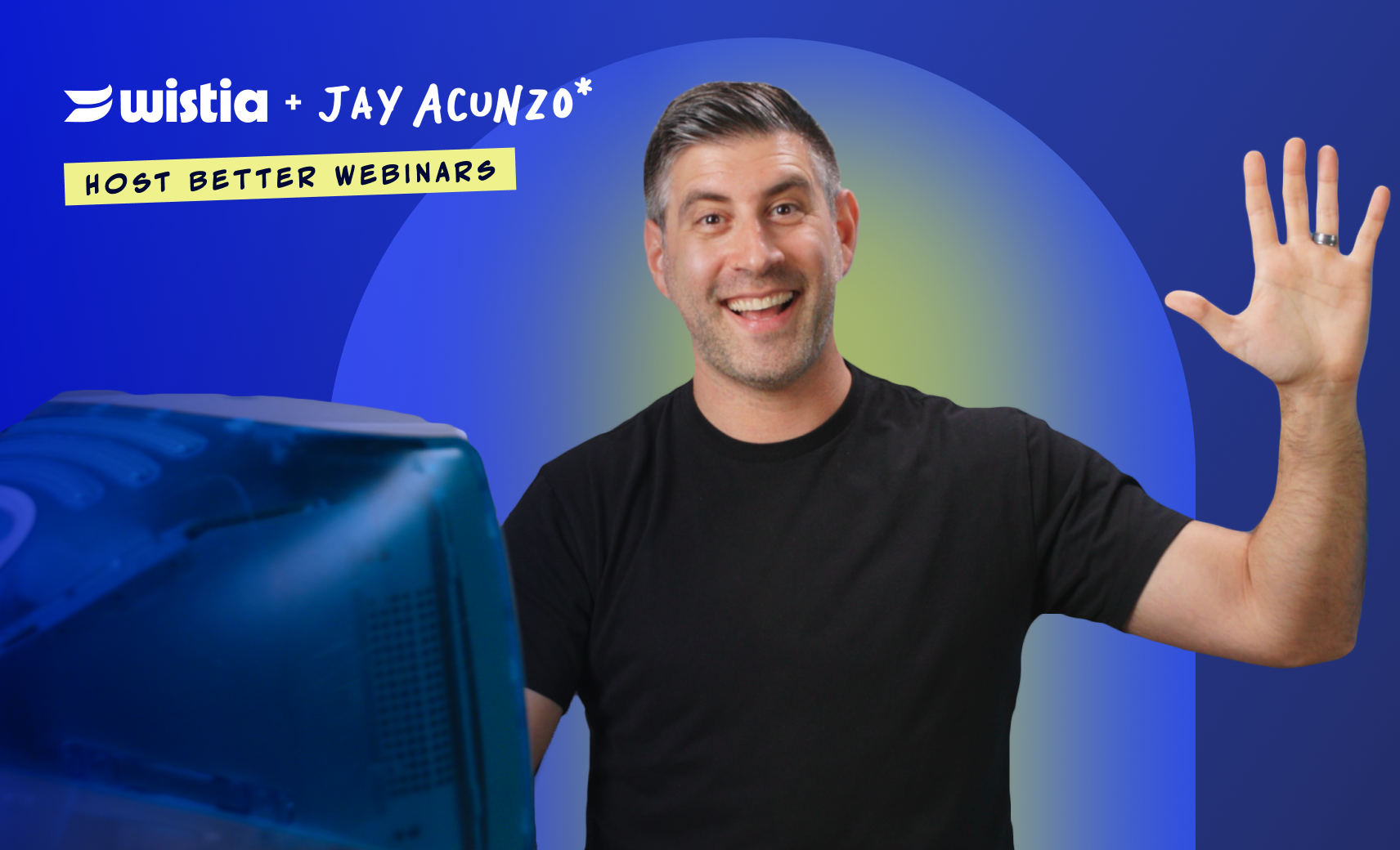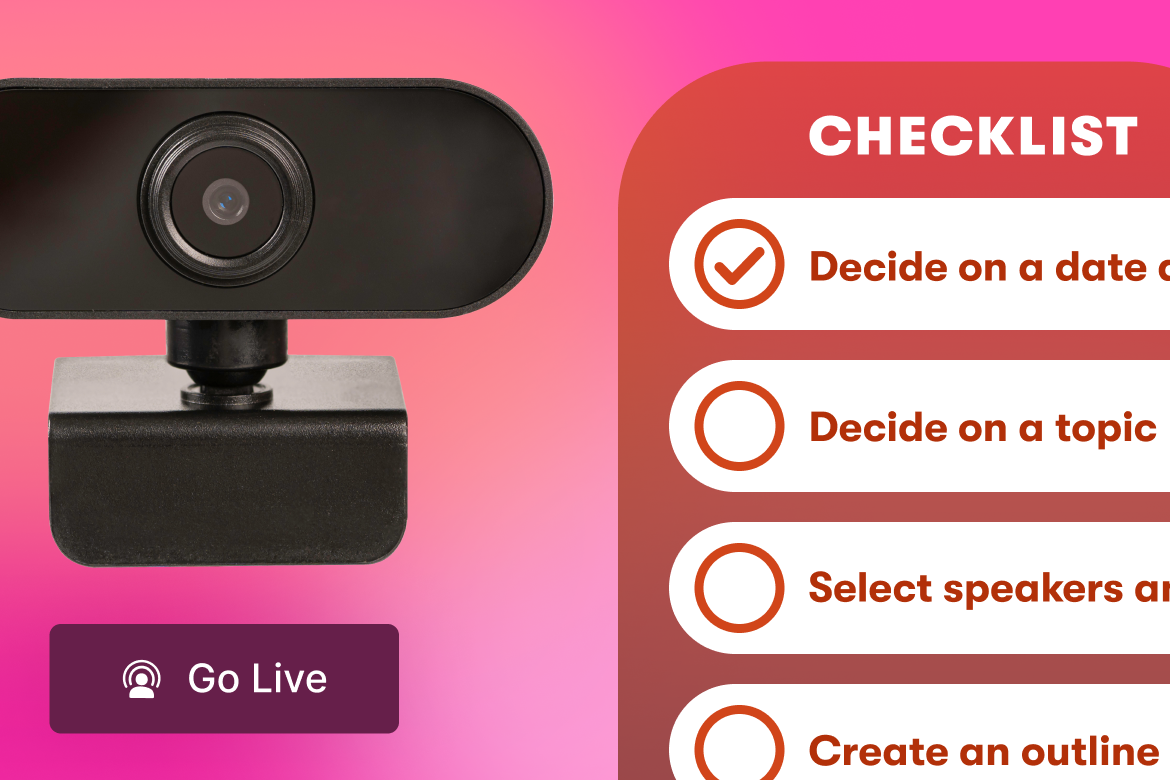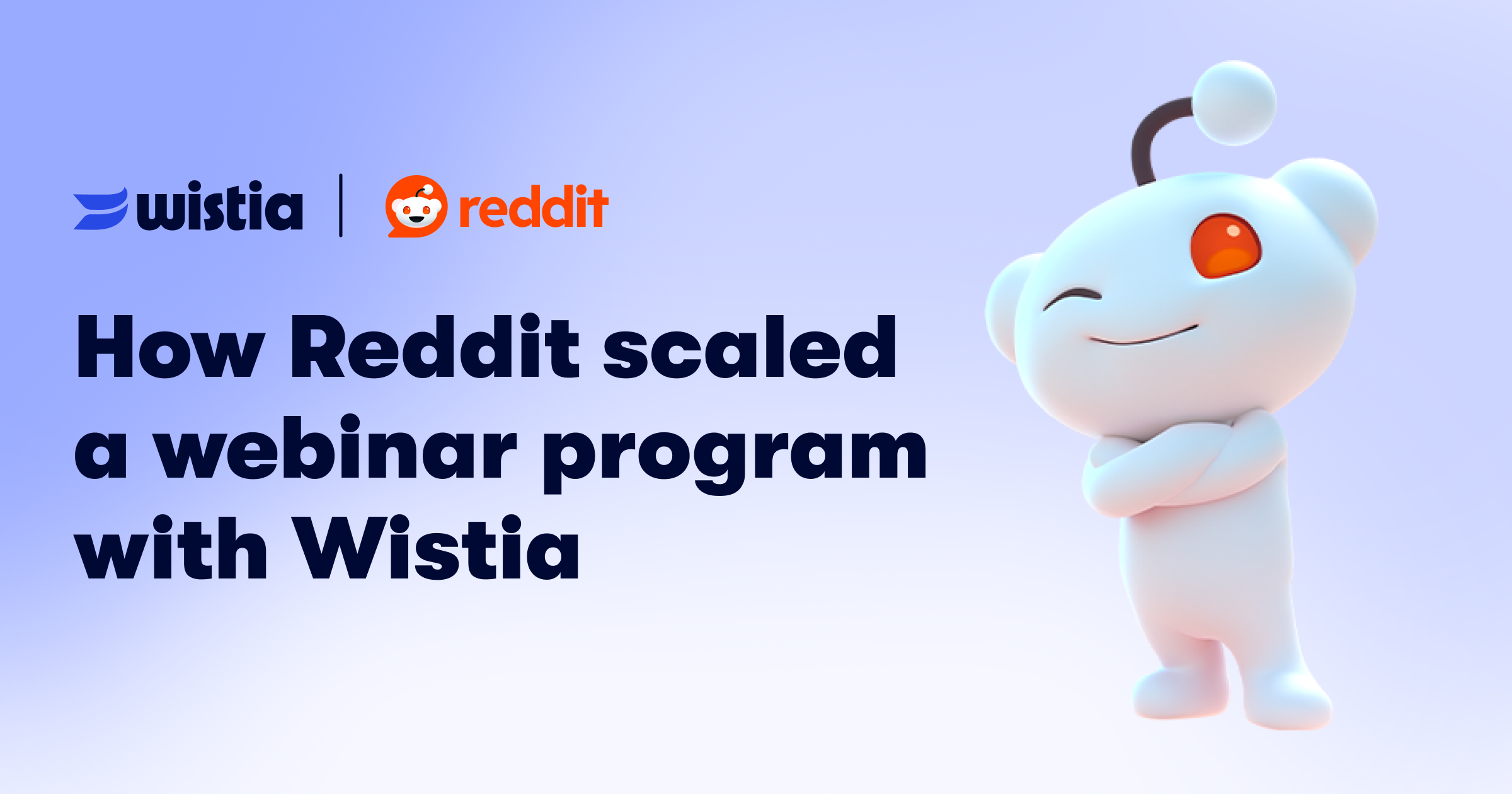What Makes a Great Podcast? 5 Creative Principles for Crafting Engaging Audio Content
October 5, 2020
Topic tags
What makes a great podcast? This existential question can haunt marketers and creators. Is it a specific number of downloads? A high play rate? An ad placement from a third party?
At Wistia, we believe a great podcast doesn’t just hit a number. It has to be creative, entertaining, and compelling enough to keep your audience on the edge of their seats and eager to play the next episode. But how exactly do you create an engaging podcast?
We tapped a few of B2B’s top podcasters for advice. Read on to learn five creative principles that can help you craft a memorable show.
1. Craft a unique concept
Your podcast’s concept is like a movie or TV show’s tagline — it summarizes what your show is about and, ultimately, persuades an audience to start listening. That’s why it’s crucial to differentiate your podcast with a unique concept. The better the concept, the easier it’ll be to attract first-time listeners.
To craft a unique concept for your podcast, we recommend creating a show positioning statement, which describes the subculture you’re targeting (audience), the unique problem your audience grapples with (insight), and the solution to your audience’s problem (theme).
Grounding your show’s creative direction in these three core elements — audience, insight, and theme — enables you to craft a concept related to your target audience’s most pressing problems and provide potential solutions. This will naturally attract relevant listeners to your podcast and persuade them to press play.
“This will naturally attract relevant listeners to your podcast and persuade them to press play.”
Once you identify each of these elements, you can frame your show positioning statement like this: “We connect with people who [the audience], but [insight], by [theme].”
For example, for our video series One, Ten, One Hundred, we wanted to explore the relationship between budget and creativity. To turn this aspiration into a concept, we ran it through a show positioning statement workshop. We landed with — “We connect with people who wish they could do big, creative marketing, but don’t have the budget or opportunity to do so, by exploring the differences that money makes in the creative process.”
Armed with this show positioning statement, we crafted a unique concept for our video series: Ask a video production agency to create three different advertisements for our product with $1,000, $10,000, and $100,000 budgets. One, Ten, One Hundred ended up generating more time spent with our brand in two months than all of our other marketing activities in the same year. It also won the 2019 Webby Award for “Best Video Series” in the Branded Entertainment category.
This positioning statement is an example from a video series, but the same concept still applies to podcasts and audio-first shows.
2. Make it personal
Most marketing experts will tell you that creating a relevant, enjoyable, and refreshing podcast is enough to build a loyal, passionate audience. But according to Jay Acunzo, founder of Marketing Showrunners, you need to add another layer to your show to make it your audience’s favorite — it has to be personal.
“You’re relevant, so they’ve glanced your way. You’re enjoyable, so they’ve decided to stick around. You’re refreshing, so they remember you. And then, you can become personal,” says Acunzo in his blog post about making your audience’s favorite podcast.
“Through your point of view, your support and evangelism of certain ideals, and the invitation to your audience to join you on a journey to explore and celebrate the things that make them emotionally invested in the topics, you’ve ascended to the final piece: Your show feels personal to them. It can become their favorite.”
For instance, in Acunzo’s podcast, Unthinkable, he makes his show personal by telling compelling stories of the rare few who buck their industry’s best practices and hone their intuition to do exceptionally creative work. This storytelling allows him to relate to the marketers passionate about challenging the status quo and thinking for themselves instead of blindly following conventional wisdom.
To make your podcast personal, Acunzo recommends asking yourself if your audience can relate to your show on an emotional level.
“What are you doing in your show to tap into the personal, emotional connection your audience has with the topics?” he asks in the same blog post. “Does the audience see themselves reflected in your content, not just because it’s topically relevant, but because you share a certain sense of identity with them?”
3. Lean on story structure
Storytelling is proven by neuroscience to be the most effective way to grab attention, resonate with people, and sear your brand into your audience’s memory. But how do you construct a story? Just like a house, you need to build out its basic structure first.
If you run a narrative-style podcast, check out our article Learning from Popular Television: 5 Key Story Structure Elements. It dives into Hollywood story structure and analyzes five different hit shows to teach you how to model your podcasts after Hollywood’s most compelling stories.
Here’s a quick rundown of the story structure we recommend:
- Exposition: The world or situation the hero lives in; their status quo
- Inciting incident: A significant event that disrupts their status quo creates a pressing problem in the hero’s life and compels them to solve it to return to their everyday life
- Progressive complications: Obstacles that hinder the hero’s chances of getting what they want, escalating the story’s conflict
- Turning point: A revelation that helps the hero realize what’s required to succeed
- Crisis: A tough decision that will either set the hero on the path to success or failure; they’ll never return to their regular life again
- Climax: A bold move necessary to succeed, often revealing the hero’s true character and changing their worldview forever
- Resolution: Indications of how much the hero has changed
If you run an interview-style podcast, our article, Podcasting Part 1: How to Structure Your Podcast with Jay Acunzo, deconstructs Acunzo’s story structure for his interview-style podcast, 3 clips, and uses one of his episodes as an example.
According to Acunzo, the best way to structure your story is to ask yourself the questions your audience might have about your show. Here are the questions he believes your audience is likely to ask as soon as they press play:
- “Should I keep listening to this show?”
- “Will this be valuable to me?“
- “Is this interesting to me?”
- “What lessons can I take away?”
- “What’s the next step I can take?”
By structuring your story in a way that answers these questions in this order, you’re more likely to get people to listen to the whole thing.
4. Lead with a memorable open
Other than being some of the best shows on television, what do Breaking Bad, The Office, and Malcolm in the Middle have in common? They all rely on cold opens to instantly grab their audience’s attention.
Instead of warming up audiences with background information about your episode’s characters, setting, and plot, cold opens are segments at the very beginning of your podcast that splash right into the meat of the story. They can also tell a standalone story that can be related to the plot.
The theory behind this technique centers around the idea that listeners will be less likely to lose interest in your podcast when they’re immersed in the story right away.
For your podcast, consider opening with a standalone story about your characters related to your episode’s overarching theme. You could also open with the beginning of your episode’s climax, and then, right before you reveal the climax’s main events, go back to the beginning of your story, tell it from start to finish, and end with the main events of your climax.
Of course, a cold open might not be the best approach for every show or concept. The real key here is to pick a memorable opening that hooks the audience right away. A few ways to do this without a cold open include creating a catchy branded theme song or getting creative with other structural elements of the show. If contextual information is important for your opening, think outside of the box on other unique ways to capture and keep listeners’ attention.
“The real key here is to pick a memorable opening that hooks the audience right away.”
5. Ask questions that elicit emotional responses
Whether you run a narrative-style or interview-style podcast, your guests’ answers will make or break your show. So, how do you extract the most emotional, narrative-driven answers from your guests? You have to ask the right questions.
In our article Podcasting Part 3: Tips for Conducting a Great Interview with Jay Acunzo, we asked Jay Acunzo what those questions are. He gave us three big ones:
- “Tell me about . . .” or “What was it like when . . . ?” pushes your guests to think back on a particular situation and tell a story.
- “How did it feel when . . . ?” or “What changed when . . . ?” encourages your guest to reflect on how they felt during a specific situation and can lead to deep, profound moments.
- “What’s an example of that?” or “What was the least/most/best/worst . . . ?” prompts your guests to spell out the details, which can result in more specific, engaging stories and answers.
If you can pepper your interview with these types of questions, you can bring out your guests’ most interesting, entertaining selves, which will make for a great listen.
Making a great podcast on your own
As marketers, we tend to put creativity on the back burner to focus on ROI-driven campaigns. But in a crowded space, prioritizing creativity can actually be the best form of marketing. People recommend podcasts as much as they do movies and TV shows, and if you can hit all the marks above, you can separate your show and your brand from the pack.






